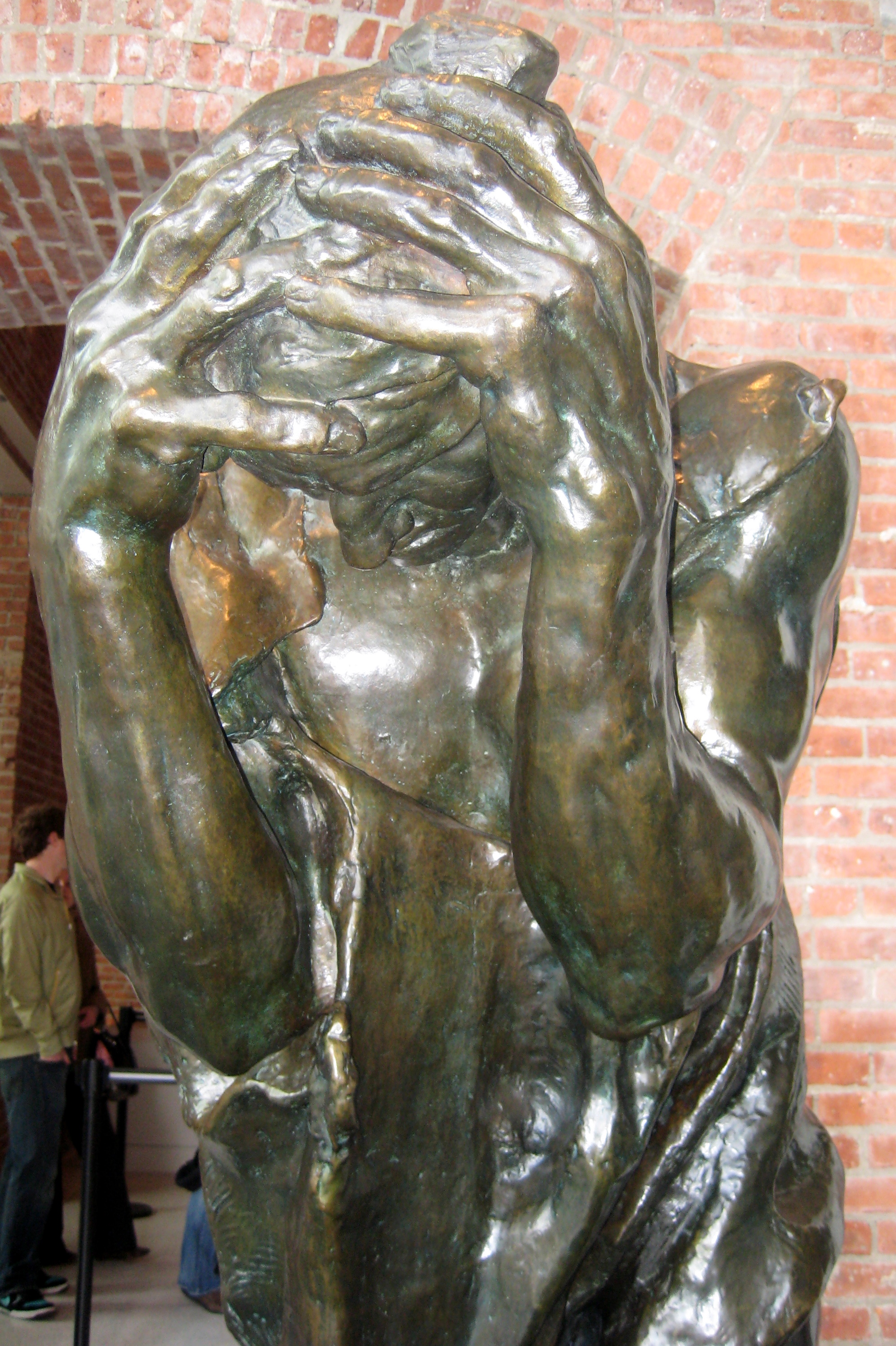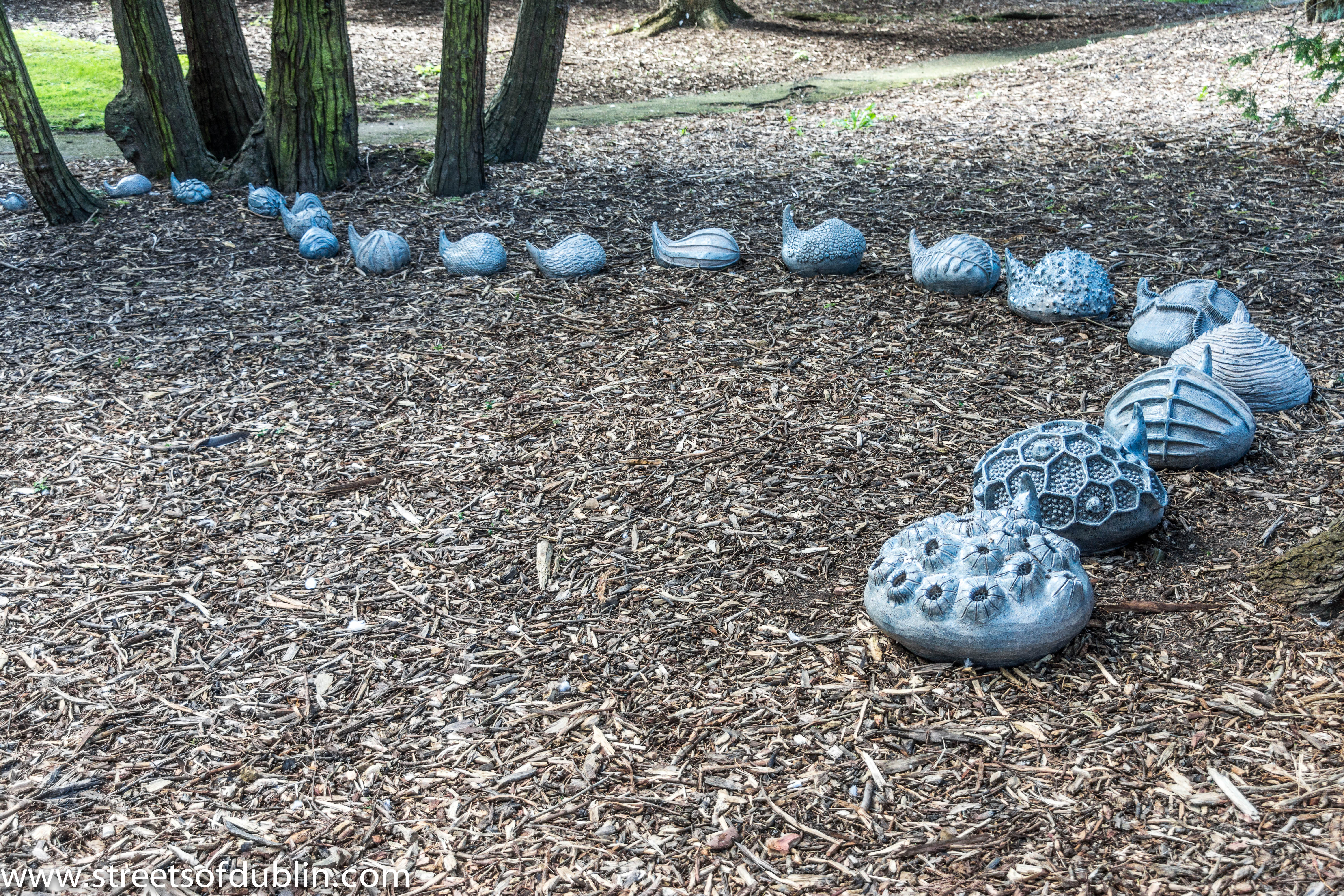Some cool visual art images:
NYC – Brooklyn Museum – Auguste Rodin’s Burghers of Calais – Andrieu d’Andres

Image by wallyg
Les Bourgeois de Calais (The Burghers of Calais) is one of the most famous sculptures by Auguste Rodin. It serves as a monument to the heroism of six burghers in Calais during a seige by the England in the Hundred Years’ War in 1347.
After a victory in the Battle of Crécy, England’s King Edward III besieged Calais, an important French port on the English channel, and Philip VI of France ordered the city to hold out at all costs. Which it did for a over a year. Philip failed to lift the siege and starvation eventually forced the city to parlay for surrender. Edward offered to spare the people of the Calais if any six of its top leaders would surrender themselves. Edward demanded that they walk out almost naked, wearing nooses around their necks and carrying the keys to the city and castle. One of the wealthiest of the town leaders, Eustache de Saint Pierre, volunteered first and five other burghers–Jean d’Aire, Jacques and Pierre de Wissant, Jean de Fiennes, Andrieu d’Andres–soon followed suit. Though the burghers expected to be executed, their lives were spared by the intervention of England’s Queen, Philippa of Hainault, who persuaded her husband by saying it would be a bad omen for her unborn child. Rodin depicts a larger than life Saint Pierre leading the envoy of emaciated volunteers to the city gates, prepared to meet their imminent mortality.
The monument was initially proposed by Omer Dewavrin, mayor of Calais, for the town’s square in 1884. Unusual in that monuments were usually reserved for victories, the town of Calais had long desired to recognize the sacrifices made by these altruistic men. Rodin’s controversial design echoed this intent–the burghers are not presented in a heroic manner, but sullen and worn. His innovative design initially presented the burghers at the same level as the viewers, ratherthan on a traditional pedestal, although until 1924 the city, against Rodin’s wishes, displayed it on an elevated base.
Other casts stand around the world–the garden of Musée Rodin, the Victoria Tower Gardens, in the shadow of the Houses of Parliament in London; the Israel Museum in Jerusalem, the Rodin Museum in Philadelphia, the Metropolitan Museum of Art in New York City, the Brooklyn Museum in New York City, the sculpture garden of the Smithsonian Hirshorn Museum in Washington D.C., the National Museum of Western Art in Tokyo, the Rodin Gallery in Seoul, and Glyptoteket in Copenhagen, to name a few. Some installations have the figures tightly grouped with contiguous bases, while others, like this one, have the figures separated. Some installations are elevated on pedestals, others are placed at ground level. At Stanford University’s Iris & B. Gerald Cantor Center for Visual Arts, null, concealing the bottom few inches of the bases, and spaced such that viewers can walk between the figures. The museum claims this is how Rodin wished them to be displayed.
The Burghers display at the Brooklyn Museum includes a draped Pierre de Wissant, Saint Pierre, Andriue d’Andres, and a nude Pierre de Wissant.
*
Due to installations in the Iris and B. Gerald Cantor Gallery, twelve bronze sculptures by Auguste Rodin have been installed in the Rubin Entrance Pavilion. This newly excerpted presentation of the Museum’s large holdings by Rodin includes The Age of Bronze, a signature conception from the early years of the sculptor’s career, as well as other works from his most significant commissions, including The Burghers of Calais, The Gates of Hell, and the Monument to Balzac. These casts came to the Brooklyn Museum through the generosity of Iris and B. Gerald Cantor.
The Brooklyn Museum, sitting at the border of Prospect Heights and Crown Heights near Prospect Park, is the second largest art museum in New York City. Opened in 1897 under the leadership of Brooklyn Institute of Arts and Sciences president John B. Woodward, the 560,000-square foot, Beaux-Arts building houses a permanent collection including more than one-and-a-half million objects, from ancient Egyptian masterpieces to contemporary art.
The Brooklyn Museum was designated a landmark by the New York Landmarks Preservation Commission in 1966.
National Historic Register #77000944
Migration by Petrina Shortt: Sculpture In Context 2012 at the National Botanic Gardens

Image by infomatique
Sculpture In Context 2012 at the National Botanic Gardens, Glasnevin, Dublin 9.
6th September to 19th October 2012
Sculpture in Context continues to build on 26 years of experience in organising successful exhibitions. It has, over the years staged highly acclaimed visual arts events at venues such as Fernhill Gardens, the Conrad Hotel, Kilmainham Gaol, the Irish Management Institute, Dublin Castle, Farmleigh House and the National Botanic Gardens.
The gardens are not only a botanical haven, and a quiet oasis on the outskirts of a modern European City, they also offer a challenging venue which gives the artist the rare opportunity of realising large scale work. It also gives the visitor an opportunity to ramble and explore, sometimes finding sculptures in the most unusual places. The sculptures are displayed throughout the gardens, ponds, Great Palm House, and Curvilinear Range, with the smaller works exhibited in the gallery above the visitors’ centre.